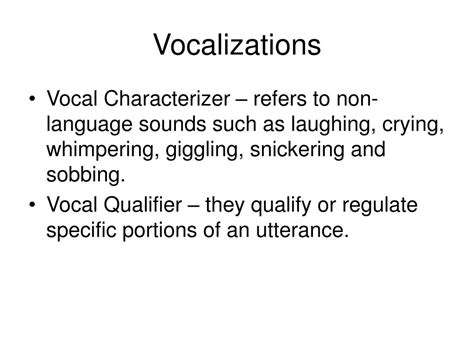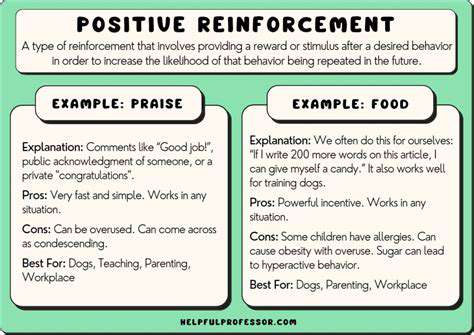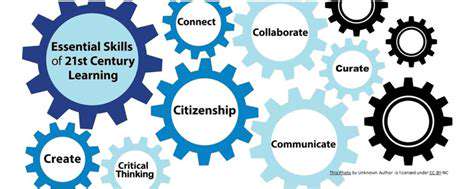Debunking Myths About Puppy Socialization
Contents
Puppy socialization is ongoing and essential throughout a dog's life.
Socialization needs extend beyond the first few months of a puppy's life.
Quality interactions matter more than quantity for effective socialization.
Safe environments are crucial for successful puppy socialization experiences.
Positive reinforcement aids in building a puppy's confidence during socialization.
Socializing beyond a puppy's first year remains beneficial for behavior adjustment.
Professional guidance can enhance a puppy's socialization process effectively.
Puppy socialization includes diverse experiences beyond just dog interactions.
Fear and anxiety in puppies stem from lack of early socialization.
Gradual exposure to fears can help build a more confident puppy.
Myth 1: Socialization is Only Necessary in the First Few Months
Understanding the Lifelong Need for Socialization
Puppy socialization is often mistakenly viewed as a short-term requirement. In reality, socialization needs extend beyond the initial months of a puppy's life. Research indicates that socialization during various life stages can significantly impact a dog’s behavior and temperament. Early interaction with different environments, people, and other animals lays a foundational understanding crucial for their development.
As puppies mature, consistent exposure to new stimuli can help reinforce their adaptability. Studies demonstrate that well-socialized dogs are less likely to develop behavioral issues such as fear or aggression later in life. Therefore, ongoing socialization is not merely beneficial; it's vital for a balanced and well-adjusted dog.
Critical Periods Beyond Early Months
While the first few months are indeed critical, the importance of socialization stretches into adulthood. The American Veterinary Society of Animal Behavior recommends ongoing social experiences throughout a dog’s life. Engaging in puppy classes, adult training, or social meet-ups not only keeps dogs stimulated but strengthens the bond with their humans.
Puppies gradually go through sensitive periods where they are particularly receptive to various experiences. These periods can extend to up to two years of age. It is crucial to continue providing socialization experiences throughout these developmental phases to ensure that your dog remains confident and well-adjusted.
Common Misconceptions About Timing
Many believe that once a dog reaches a year of age, the window for effective socialization has closed. This misconception can lead to missed opportunities for improvement in behavior and social skills. Contrary to this belief, factors like genetics, temperament, and previous experiences can influence how a dog reacts to new situations at any age.
Animal behaviorists affirm that consistent socialization can positively alter behaviors, even in older dogs. Engaging in positive reinforcement training and introducing controlled exposure to new environments can help modify longstanding habits. This underscores the notion that socialization is an ongoing process rather than a short phase.
Building a Comprehensive Socialization Strategy
To ensure effective socialization throughout a dog's life, pet owners should develop a Comprehensive strategy that includes varied environments, interactions, and experiences. This strategy should encompass regular outings to parks, pet-friendly events, and varied human interaction. Each new experience should be viewed as an opportunity to help the dog learn and adapt.
Additionally, monitoring your dog’s response to different stimuli during these interactions is critical. If signs of discomfort or stress appear, providing support and approaching new experiences gradually can help your dog build confidence. Consulting with a professional trainer or behaviorist can provide tailored strategies that suit your dog's unique personality.
Myth 2: Socialization Means Exposing Puppies to Every Situation
Understanding the Socialization Process
Socialization for puppies is not merely about exposing them to a wide range of situations; rather, it involves a structured approach to helping them learn appropriate behaviors in various environments. During the critical socialization period, which typically occurs between three and fourteen weeks of age, puppies need exposure to different people, pets, and situations in a controlled and positive manner. This foundational stage has been shown in studies to significantly influence a dog's behavior as an adult.
Experts suggest incorporating new experiences gradually, instead of overwhelming puppies with exposure to everything at once. Rapid socialization without proper pacing can lead to anxiety or fear responses, which may hinder rather than help the puppy’s development. Therefore, it’s important for owners to be mindful of the experiences they introduce and to monitor their puppy's reactions closely.
Quality Over Quantity in Social Experiences
It’s essential to prioritize quality over quantity when it comes to socialization experiences. While many trainers advocate for a broad spectrum of exposures, it’s crucial that each interaction remains positive. For instance, a puppy who meets ten new dogs but has a negative encounter with one may develop fears, transferring that anxiety to all future interactions. This principle is supported by behaviorist studies which indicate that early adverse experiences can have long-term implications on dog behavior.
Safe Environments for Effective Socialization
Providing a safe and controlled environment is vital for effective Puppy Socialization. This might include dog training classes that encourage structured play, puppy parties that allow for supervised interactions, or even organized walks in dog-friendly parks. Each scenario offers a platform for learning proper behaviors while minimizing risks. Moreover, owners should establish a secure space where their puppies can retreat when feeling overwhelmed, reinforcing the idea that they have control over their surroundings.
Consistent socialization in safe settings can enhance a puppy’s confidence and adaptability, preparing them for future encounters beyond their immediate neighborhood. According to canine psychologists, establishing a sense of security in varied experiences can profoundly impact their emotional resilience as adult dogs.
Learning from Observational Cues
Puppies are incredibly perceptive and often learn from observing the reactions of their owners. When faced with new experiences, how an owner reacts can greatly influence the puppy's perception of that situation. If an owner remains calm and positive, it signals to the puppy that there is no cause for concern. Conversely, if an owner appears anxious or fearful, the puppy may mirror that behavior, leading to apprehensive reactions in similar circumstances in the future.
The Role of Professional Guidance
Enlisting the help of professional trainers can significantly enhance the Socialization Process. Professional trainers possess the knowledge and experience to create tailored socialization plans that suit individual puppies' needs. They can offer insight into techniques that encourage healthy interactions while steering clear of negative experiences. Moreover, certifications from reputable organizations can give owners confidence in the methods being employed.
With the guidance of knowledgeable trainers, owners can ensure that their puppies are not only exposed to various stimuli but are learning to navigate them responsibly. Engaging with professionals early in the socialization process can lead to well-adjusted adult dogs who are more capable of handling the complexities of life.
Myth 3: Puppy Socialization Only Involves Interacting with Other Dogs
Understanding the Full Scope of Socialization for Puppies
Puppy socialization extends beyond merely interacting with other dogs and encompasses a range of experiences. Socialization involves exposing puppies to various environments, sounds, sights, and smells. During the critical socialization period, which lasts from about 3 to 14 weeks, it’s essential for puppies to have standardized experiences with humans, other animals, and various stimuli. This is important as it helps to prevent fear-based behaviors and anxiety-related issues later in life.
The American Veterinary Society of Animal Behavior emphasizes that successful socialization should include the exposure to different types of people, such as children, the elderly, and individuals of various ethnic backgrounds. Each interaction is an opportunity for your puppy to learn positive behaviors and adapt to a variety of situations. Therefore, owners should create a diverse socialization plan that incorporates not just dog-to-dog interactions but a broader exposure to the community.
Strategies for Effective Puppy Socialization
Ensuring comprehensive socialization requires a well-structured approach. Owners can start by enrolling their puppies in puppy kindergarten classes that focus on safe play with other dogs while also incorporating interaction with people. These environments are designed to facilitate safe learning and reduce the risk of adverse experiences. According to a study published by the Journal of Veterinary Behavior, early socialization reduces the likelihood of aggression and fear as the dog matures.
Additionally, take your puppy on various outings, such as visits to pet-friendly parks, markets, or even busy city streets. Arranging playdates with well-behaved and vaccinated dogs can offer further opportunities for Positive Interactions. It’s crucial to monitor your puppy's body language and only expose them to experiences that are positive. If they appear fearful, it's a good idea to retreat and try again in a more controlled setting until they become more comfortable.
Myth 4: Socialization is a One-Time Event

Understanding Socialization as a Continuous Process
Socialization should not be viewed as a singular event, but rather as an ongoing journey. This engagement with various environments and experiences contributes to a well-adjusted puppy, and acknowledges their developmental stages.
Research suggests that the critical windows for socialization occur at different stages of a puppy’s life, particularly between 3 and 14 weeks. This window underscores the importance of continuous exposure to new stimuli, as it can greatly shape your pet’s future behavior.
The Role of Adult Experiences in Socialization
Many pet owners might assume that once a puppy is adequately socialized during its early weeks, additional social interactions aren’t necessary. However, adult dogs still benefit from ongoing exposure to new people and situations, which can reinforce the skills learned from puppyhood.
For example, dogs that encounter strangers or new environments as adults show increased adaptability and confidence. Unfamiliar situations can arise throughout a dog's life, and prior socialization experiences can help them navigate these occasions with less anxiety.
In fact, a study from the American Veterinary Society of Animal Behavior indicates that socialization beyond puppyhood leads to a decrease in behavioral issues later in life.
Incorporating Socialization into Daily Activities
- Include your puppy in family outings to expose them to various settings.
- Utilize dog parks for off-leash play with others to enhance social skills.
- Invite friends over to meet your puppy and create different social scenarios.
One effective method to ensure continued socialization is by integrating opportunities into day-to-day routines. For instance, regular walks in different neighborhoods or visits to local pet-friendly stores can provide new experiences, aiding in their development as a versatile and stable adult dog.
Additionally, attending training classes can not only teach obedience but also serve as a socialization hub. The interactions with both humans and other dogs during these classes are invaluable learning opportunities that will remain beneficial throughout their lives.
The Importance of Positive Reinforcement
In any socialization effort, leveraging positive reinforcement can significantly influence how a puppy perceives new experiences. When a puppy encounters something unfamiliar, responding with treats or praise can form a positive association, making future interactions much smoother. This approach helps to build confidence in new situations, rather than fear.
Research indicates that dogs that experience effective socialization with positive reinforcement are less likely to develop anxiety-related behaviors. Therefore, active participation in socialization sessions is vital. Always reward your puppy for calm behaviors around new stimuli, reinforcing the notion that discovering the world is a safe and enjoyable process.
Common Misconceptions About the Timeline of Socialization
There's a prevalent myth that socialization efforts taper off after the puppy’s first year. However, this is far from the truth. According to dog behavior experts, the process should ideally continue throughout a dog’s life, adapting as they grow. Ongoing training and exposure will help mitigate potential issues like fear or aggression.
It's crucial to adjust socialization techniques as dogs age. For example, older dogs with less experience may require a more structured approach to socialization to mitigate fears. Moreover, understanding that every dog is unique can influence how frequently and in what contexts they should be introduced to novel experiences.
In essence, embracing a lifelong commitment to dog socialization not only benefits the puppy but also enriches the bond between owner and pet. Remember, a well-socialized dog is much more likely to engage positively with the world around them.
Myth 5: Puppies Will Naturally Outgrow Fear and Anxiety
Understanding the Roots of Fear and Anxiety in Puppies
Fear and anxiety in puppies can often stem from a lack of early socialization experiences. During their critical developmental periods, typically ranging from 3 to 14 weeks, puppies are highly impressionable. If they haven't been exposed to various people, environments, and other animals, their natural instincts may lead to cautious or fearful behaviors later in life.
Additionally, genetics play a significant role in a puppy's temperament. Some breeds are more predisposed to anxiety than others. A study published in the Journal of Veterinary Behavior highlights a correlation between specific breed traits and behavioral issues, suggesting that understanding these factors can help owners manage their puppies more effectively.
The Importance of Early Socialization
Early socialization goes beyond meeting new people or other pets; it's also about introducing puppies to a variety of sounds, sights, and textures. Research indicates that puppies who experience diverse stimuli during their critical learning phases tend to be more adaptable and less fearful as adults. This highlights how essential it is for owners to actively seek socialization opportunities in their puppy’s early weeks.
This phase is not merely a getting used to experience. Engaging with different situations can set a behavioral precedent that reduces anxiety in unknown circumstances later on. It's important to guide puppies through controlled socialization experiences, ensuring they feel secure as they encounter new challenges.
Common Misconceptions about Fear Management
A prevalent myth is that giving a fearful puppy more time alone will help them acclimate. In truth, isolation can exacerbate anxiety, leading to more profound behavioral issues. Dogs thrive on positive interactions and reinforcement. Encouraging interaction with non-threatening environments and companions can significantly alleviate feelings of fear.
Moreover, some might suggest that simply ignoring anxious behaviors will lead to them fading away over time. However, this can result in the puppy internalizing fear without proper coping mechanisms. Instead, gradual, positive reinforcement strategies should be incorporated to foster a more confident demeanor.
Strategies to Address Fear and Anxiety in Puppies
Various strategies can be employed to alleviate puppy anxiety effectively. Behavioral trainers often recommend desensitization techniques, where puppies gradually become exposed to their fears in a controlled manner, allowing them to build confidence. This method requires patience and controlled exposure to achieve desired results.
Additionally, incorporating positive reinforcement, such as treats or praise when they confront their fears, can facilitate a more relaxed demeanor. Supportive training classes also provide a structured environment to meet other dogs, encouraging social interactions that build confidence.
It's essential to remember that if anxiety persists, engaging a professional dog trainer or a veterinary behaviorist may be necessary. They can provide tailored plans to suit individual puppy needs, helping guide both owners and pets toward a calmer future.
When to Seek Professional Help
While many instances of fear and anxiety in puppies can be managed with proper training and socialization, certain situations may warrant professional intervention. If a puppy exhibits severe signs of distress, such as excessive barking, aggressive behaviors, or prolonged withdrawal, it may be advisable to consult a trainer or a veterinary behaviorist for further guidance.
Professional help is particularly crucial if the puppy's fear manifests in destructive behaviors, as these can indicate deeper issues that might not resolve with typical socialization efforts. A professional can assess individual situations and develop comprehensive strategies to assist both the puppy and the owner in overcoming these challenges.
Ultimately, early intervention can lead to a more balanced and happy adult dog. Addressing anxiety proactively is crucial in paving the way for a successful and harmonious relationship between the puppy and its owner.






